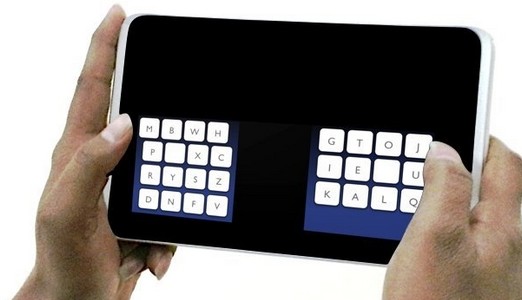New Keyboard Design Enables Much Faster Thumb-typing on Touchscreens
on

Typing on today’s mobile phones and tablets is needlessly slow. One limitation is that the QWERTY layout is ill-suited when typing with the thumbs. Two-thumb typing is ergonomically very different from typing on a physical keyboard, which is why researchers from the Max Planck Institute and colleagues from the University of St Andrews and Montana Tech set out to create an alternative keyboard layout for two-thumb text entry with the goal of improving typing performance and minimizing the strain for the thumbs.
The researchers incorporated models of thumb movement into a computational optimization algorithm. The computational optimization process had two goals: to minimize the moving time of the thumbs and to approximate alternating sides as well as possible. The result achieved by computational optimization was rather unexpected. In the new keyboard KALQ, all vowels, with the exception of the letter “y”, are placed in the area for the right thumb, whereas the left thumb gets assigned more keys. To fully benefit from this layout, the users were trained to move their thumbs simultaneously. While one thumb is typing, the other one can move to its next target.
A user study confirmed that, after a short amount of practice, users could type 34% faster than they could with a QWERTY layout. KALQ will be made available as a free app for Android-based smartphones.


Discussion (0 comments)